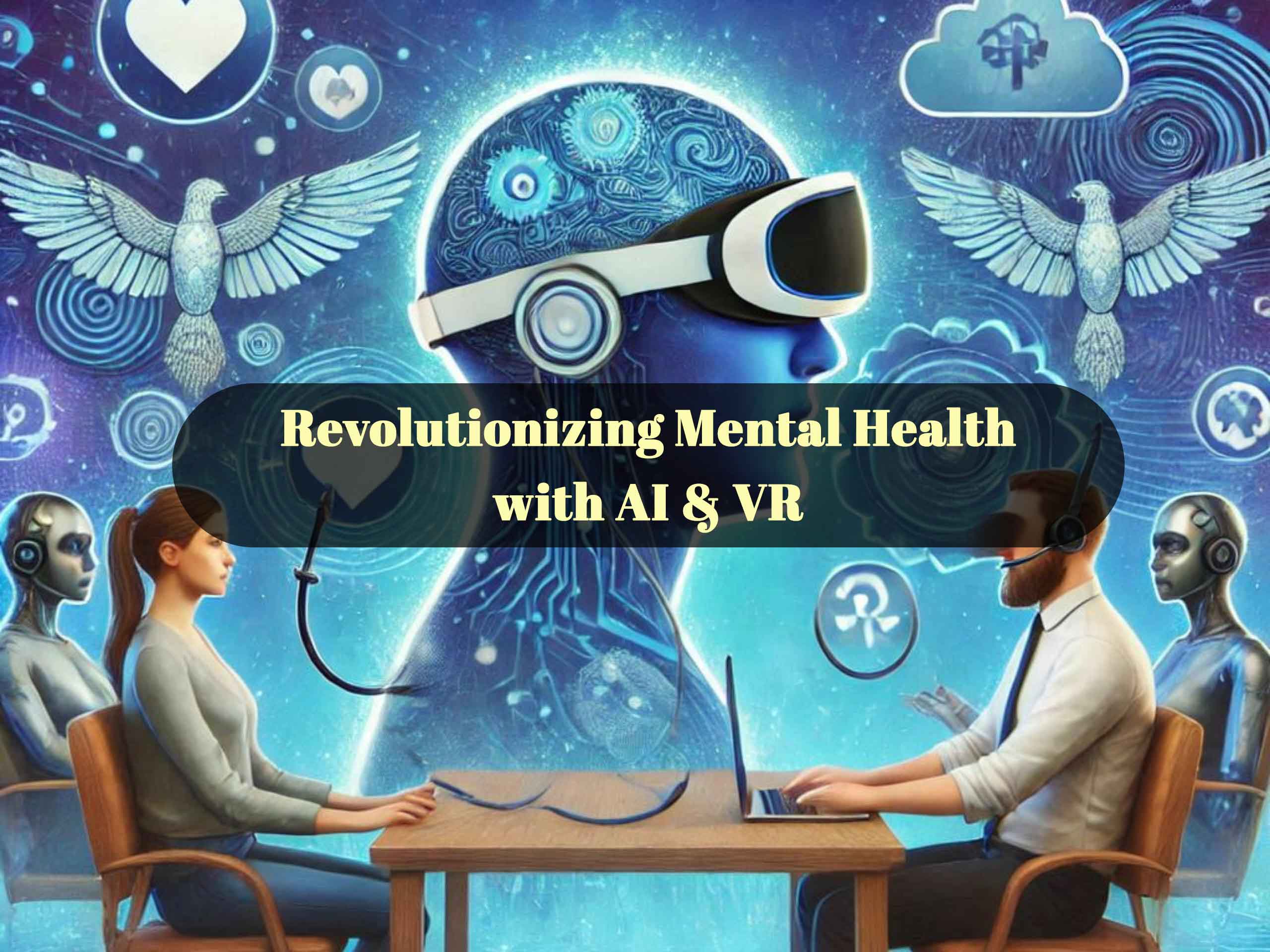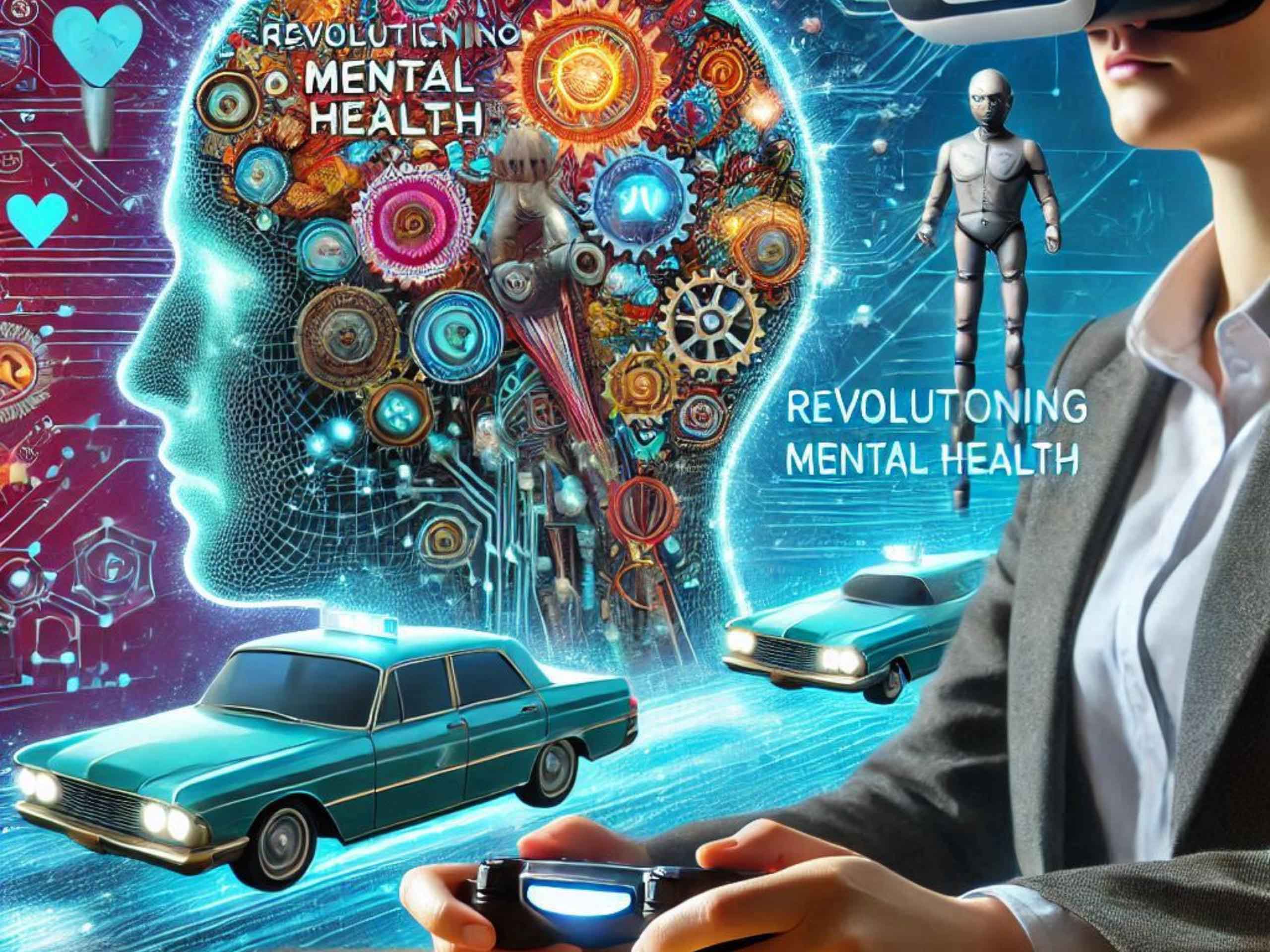Revolutionizing Mental Health with AI & VR

Artificial Intelligence (AI) and Virtual Reality (VR) are two of the most transformative technologies of our era. When strategically combined, they are set to revolutionize the delivery and effectiveness of mental health care. With increasing mental health challenges globally, these technologies provide innovative and promising tools to diagnose, treat, and manage mental health conditions more efficiently.
In this article, we explore how AI and VR are making an impact in the mental health field, highlighting their applications in therapy, early diagnosis, remote treatment, and self-management of mental health conditions.
AI in Mental Health Care
Artificial Intelligence facilitates advancements in mental health care in several ways, primarily through predictive analytics, natural language processing, and machine learning algorithms. AI algorithms can analyze vast datasets to identify early signs of mental health conditions, ranging from depression to anxiety disorders.
For instance, chatbots powered by AI can serve as mental health assistants, engaging users in conversations, identifying emotional cues, and providing immediate support.
AI also enables the creation of personalized treatment plans by analyzing individual responses to therapies. Clinicians use AI to enhance their decision-making processes, making therapy more effective and less time-consuming. Moreover, virtual mental health services for individuals in remote or underserved areas are increasingly relying on AI-driven tools for intervention.
Virtual Reality in Mental Health Treatment

Virtual Reality creates immersive environments that are highly effective for mental health treatments. VR's strength lies in enabling patients to face and manage their fears in a controlled and safe environment. For instance, exposure therapy has been enhanced by VR, allowing patients to confront challenges like heights, public speaking, or PTSD triggers within a simulated setting.
Using VR, therapists can design customized environments tailored to each patient’s specific needs. This is particularly useful in treating conditions such as anxiety, phobias, or traumatic stress disorders. Certain VR applications also help individuals improve mindfulness and relaxation techniques by immersing them in peaceful scenarios such as serene forests or tranquil oceans.
Furthermore, VR solutions like Limbix or Psious are extending their impact by combining cognitive behavioral therapy techniques with virtual experiences, empowering users to actively participate in their mental well-being journey.
Collaborative Potential of AI and VR
The integration of AI with VR offers a powerful synergy for delivering automated, user-centered mental health care. Imagine a virtual therapist equipped with AI, guiding patients through personalized therapy sessions within a VR environment. AI can track user responses, emotional states, and progress within the VR simulation to optimize treatment dynamically.
Through combined capabilities, AI and VR can provide therapy on demand, increase accessibility to complex therapeutic methods, and significantly reduce the stigma associated with traditional mental health care. For instance, soldiers suffering from PTSD could benefit from AI-supported VR exposure therapy tailored to their unique experiences and recovery goals.
Research in this area is rapidly evolving, with promising early results indicating a profound impact on both short-term relief and long-term management of mental health conditions.

Collaborative Potential of AI and VR
Despite the transformative potential, the use of AI and VR in mental health is not without challenges. Data privacy and security are prominent concerns, as sensitive mental health information is processed by these technologies. Ensuring that data collected is anonymized and protected from misuse is crucial for building user trust.
Additionally, while AI and VR can enhance mental health services, they should not replace the human touch and empathy that come from counselling sessions with trained professionals. Striking a balance between automated assistance and personal care is essential.
Cost and accessibility also remain significant barriers. While the technology is advancing, making AI and VR affordable and available to individuals in low-resource settings will require thoughtful implementation strategies.
Conclusion
The use of Artificial Intelligence and Virtual Reality in mental health care represents a groundbreaking shift in how mental health conditions are diagnosed, treated, and managed. From AI-powered chatbots to VR-based exposure therapies, these technologies make mental health interventions more accessible, engaging, and effective.
However, recognizing the ethical and logistical challenges is vital for their long-term success. With continued research, innovation, and collaboration between technology developers and mental health professionals, AI and VR may soon become integral components of mental health treatment, offering hope and healing to millions across the globe.
Note: This is for informational purposes only and should not replace professional medical advice. Always consult a healthcare professional before starting any new treatment or session.
Join our community today and take the first step towards a healthier, more balanced you.
Photo: @Freepik, @unsplash, @Microsoft Designer

